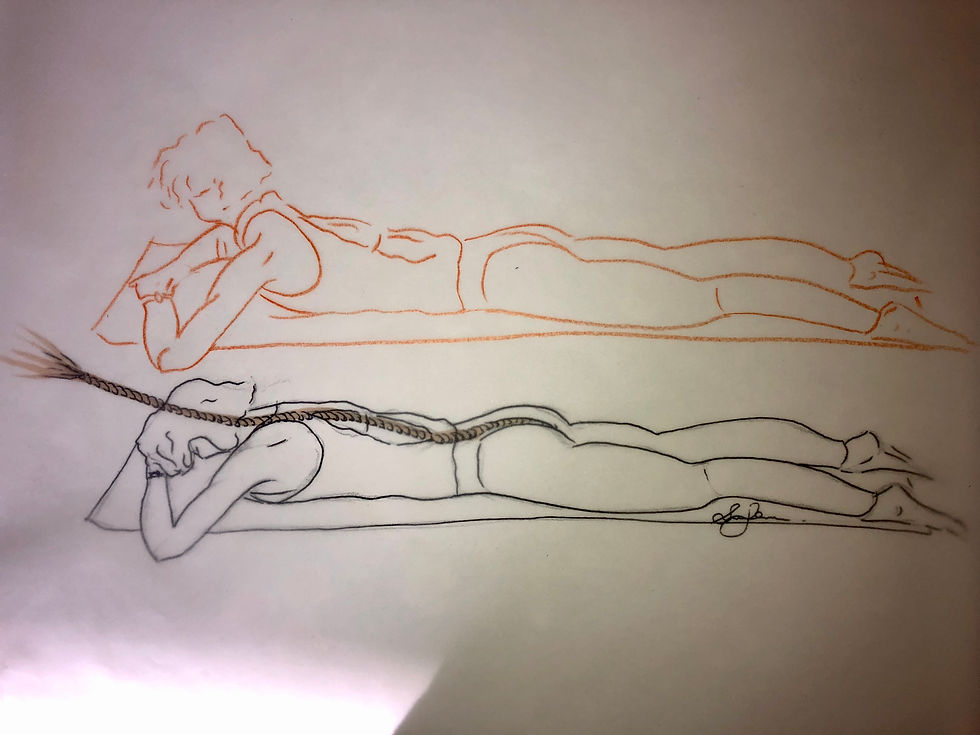‘Breathing is the first act of life and the last. Our very life depends on it.’…..Joseph Pilates
- neadgannon
- Oct 20, 2020
- 4 min read
Updated: Mar 1, 2021

Breathing; it’s the first thing we did when we were brought into this world. We take it for granted that we are breathing correctly. It’s the most natural thing our bodies can do, so surely, we don’t need to “train” ourselves on how to breathe properly? The answer is yes, you probably do! Our breath is tied directly to our nervous system. For instance; have you ever noticed that when in a panicked situation your breath gets quicker and shallower? In this same situation, our bodies are in that “flight or fight” mode; we brace, getting ready for the stressful situation that is coming our way. Unfortunately, most of us don’t get to live a peaceful life all of the time, and we can be unconsciously & habitually in this mild state of low level stress. This has the consequence of most us limiting our breathing capacity and harbouring unnecessary physical tension. Below are two breathing techniques A) Full Diaphragmatic Breathwork & B) Lateral Thoracic Breathwork. Master both & you will reap the rewards!
So why should you incorporate breath work into your training? Learning how to breath properly is the best thing you can do for yourself. Here are just some of the benefits:
Stress Relief: Breathing as mentioned earlier is tied to our nervous system. When we bring awareness to our breath, we bring our nervous system’s tone down, allowing the system to return to a “rest & digest” mode. Stress can have a serious negative impact to our bodies overtime, so incorporating breath work into your training is the perfect medicine to counteract the stress in our lives.
Release Physical Tension: When we allow ourselves to breathe completely, we let go of that physical bracing tension. That “bracing tension” can create “inter-abdominal pressure”, which can lead to all sorts of ailments, from lower back issues, incontinence, hernias etc… So, when we allow ourselves to breath completely, the body finds ease, and moves with the natural wave of the breath.
Improves Core Functionality: The breath & the core are intrinsically linked. When we learn how to breath properly, our core muscles (predominately the pelvic floor, the transverse abdominis, the multifidi & the diaphragm) will be working synergistically together. This is what we need for everyday tasks. When we have learned to breathe correctly, we have set the stage to then progress & add core strengthening work.
Builds Lung Capacity: Breathing in fully, opening up all of our airways to new fresh air.......... Breathing out fully the stale air......... is akin to having "an internal shower" as Jospeh Pilates once stated. When we train our bodies to breathe optimally, we will expand our lung capacity, improve our lung health; which in turn gives us more energy to live our lives to the full.
Improves Posture: Breathing fully will help you find that natural canister of core stability, that supports your spine & body.
Below are instructions on how to find that deep "Diaphragmatic Breathing' & the "Lateral Thoracic Breathing" which we employ extensively in Pilates. Below are audio & written guides for you to use. The audio instructions are for a seated posture so grab yourself a chair & enjoy.
Diaphragmatic Breathing
Set-up: Lying on your back, your knees bent, feet on the ground & your back gently lengthened. Place one hand on your chest & the other on your abdomen.
On your inhale, breathing in through the nose, invite the air down to your abdomen, sensing your abdomen swell & secondly invite the air into the sides of your body & your chest.
On your exhale allow the abdomen to release & let go of the air, whilst also letting go of the air in your chest, allowing the ribs & chest to release to the ground.
Inhale invite the breath into the abdomen first & then the sides of the body & chest.
Exhale allow the body to release the air with ease.
· Allow your body to RELAX on your inhale & exhale….don’t push the air in, INVITE the air into the abdomen.
· N.B avoid over-exhaling or tensing the abdominal wall to over exhale.
· Do as many repetitions of this breathing pattern as your body needs for it to become normal & easy.
· You can practice this standing, sitting or on all fours, making sure that your spine is in a neutral position i.e. gently lengthened.
Lateral Thoracic Breath
Setup: Set-up: Lying on your back, your knees bent, feet on the ground & your back gently lengthened. Wrap a towel or TheraBand around the circumference of the ribcage, holding it in place with one hand & place the other hand on the bellybutton.
On your inhale, breathing in through the nose, invite the breath into the side & back ribs. Feel for the towel or TheraBand becoming tauter as you breath in.
On your exhale, fully exhale, funnelling the breath up into the cavity of your ribcage.
On your inhale, vacuum the breath back into the side & back ribs, feeling your back expand on the ground beneath you.
Continue to fully exhale, directing the breath (and Diaphragm) up into the cavity of your ribcage.
· Relax as you inhale & exhale.
· Relax you shoulders.
. Avoid the wave of the breath moving the abdomen space, but rather allow the air to expand your ribs laterally and broaden your upper back.
· Observe your ribcage expand with your inhale & gently knit back together on your exhale….like the motion of an accordion.
· Do as many repetitions of this breathing pattern as your body needs for it to become normal & easy.






Comments